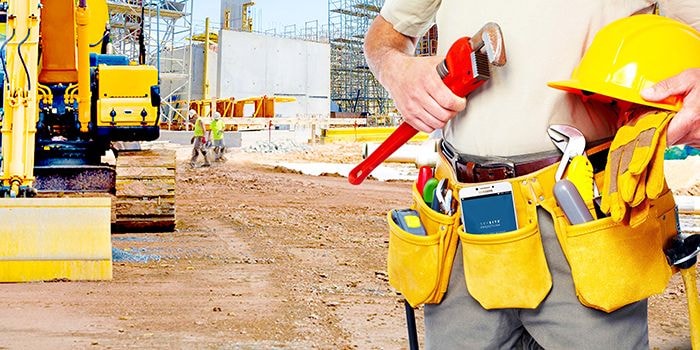Just by looking at a construction site you can tell it’s an inherently dangerous workplace. With loud machinery, scaffolding, heavy materials and equipment, it’s easy to picture how one small, wrong move could lead to disaster. Yet knowing the statistics and risks, and even with safety procedures in place, workers are often tempted to take shortcuts to meet deadlines and budget.
However, cutting corners when it comes to safety can have serious consequences. Statistics from OSHA, reveal that 2015 saw a staggering 937 fatalities at construction sites, with the top ten most frequently cited failures listed below (fiscal year 2016):
- Fall protection
- Hazard communication standard
- Scaffolding, general requirements
- Respiratory protection
- Control of hazardous energy (lockout/tagout)
- Powered industrial trucks
- Ladders
- Machinery and Machine Guarding
- Electrical, wiring methods, components, and equipment
- Electrical systems design, general requirement
In fact, safety is such a concern that New York City Mayor Bill de Blasio recently signed into law a measure that requires construction workers in NYC to undergo at least 40 hours of safety training. This is despite push-back from those who say the law will be too expensive to comply with.
While risks are inherent to every construction project, there are processes and tools to mitigate these. Construction contractors who implement formal safety and health management systems report success in reducing hazards, injuries and fatalities. The key to this success? Making safety a part of your everyday company values.
Where to get started? Here are 10 things every company should do to build create a culture where safety is priority.
Start at the Top
Safety starts with leadership, from business owners, project managers and supervisors on down, to become intrinsic to company values. Not only must top management lead by example, they will need to designate resources, people, budget, and time for training and continuing evaluation. All team members, starting from the top, need to participate to emphasize the importance of safety and make it a successful imitative.
Designate a Safety Committee or Full-time Safety Coordinator
Your committee and/or coordinator provides day-to-day support for field personnel. This team should include members from all levels and meet regularly to provide feedback and adjustments to current safety plans as the construction site evolves.
Create Accountability at all Levels
Safety plans need to be strictly enforced and all employees must be held accountable. Monitor and reinforce good habits, and make sure breaking the rules will have consequences.
Start Safety at the Project Planning Process
By integrating safety into your planning system at all possible points, you minimize the chances of costly, or even deadly, oversights.
Review Your Sub-contractors
At the job site, safety monitoring expands past your company. Investigate the safety records and performance of potential sub-contractors as part of your procurement process. Ensure you’re bringing on teams with not only with clean safety records, but who share your core commitment to safety.
Provide Proper Training for Your Workers
This may seem obvious, but don’t assume. Make sure your teams are trained in equipment use, job site risks, emergency plans, and reporting incidents. Be sure to include subs and temporary workers in training and orientations.
Use Technology
Today, there are apps for just about everything. There are even apps dedicated to jobsite safety, such as Safesite, that make it easy to identify, monitor and streamline safety tasks. In addition, you can use your construction document management platform to store safety plans, manuals, and emergency contacts/plans so they are easily accessible.
Address Safety Everyday
Don’t just conduct one training session and call it a day. Make safety part of the conversation every day and incorporate it into meetings, reviews, signage, etc.
Conduct Regular Inspection and Review All Incidents
Conduct inspections at your jobsite regularly to make sure safety initiatives and practices are being followed. Make sure all equipment has been inspected and is in proper working order. Investigate every incident and near miss to determine the causes and use that information to improve your safety processes.
Be Transparent and Foster Open Communication
Allowing open and informal communications between workers and supervisors is key to building a culture of safety. When employees feel their concerns are being heard without repercussions, these dialogs can unearth faulty equipment, poor habits and behavior, and fundamental issues in the current safety plan, before they lead to an accident. Management must also be open about what is being reported and actions being taken.
Proactive safety management not only means keeping track of safety meetings, identifying hazards, using preventative maintenance checklists, collecting near miss data, etc. It includes taking your most valuable resource, people, and building a culture using open dialog to for improved safety awareness that eventually leads to gains in morale, quality and customer satisfaction.





